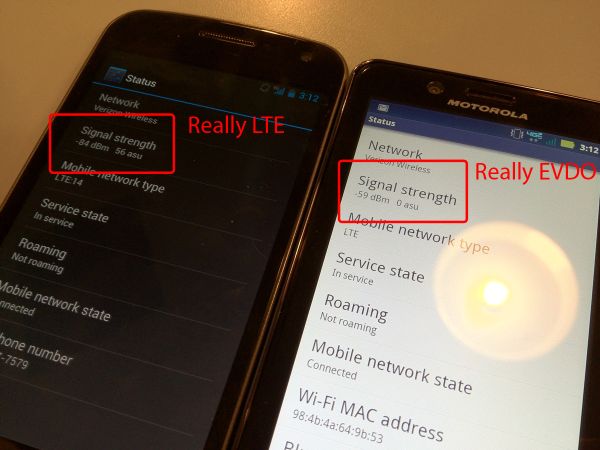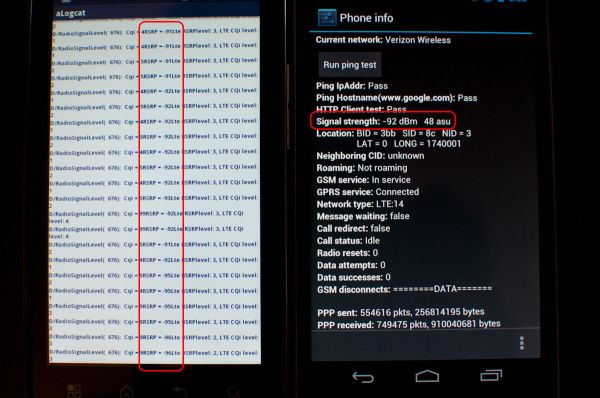I feel a link to my thread from early December is relevant to this.
 http://forums.androidcentral.com/ve...xus-properly-display-lte-signal-strength.html
http://forums.androidcentral.com/ve...xus-properly-display-lte-signal-strength.html
It is
VERY good to see that it looks like LTE signal is properly being mapped now. Very, VERY good for applications that rely on the LTE signal strength figure, such as Sensorly. The signal strength is a bittersweet reality, of course. Now we get to see how
terrible LTE coverage really is in a lot of areas. Verizon has gotten away with this for so long because of the way LTE is designed -- it performs better even in fringe areas than 3G, so a lot of times people don't realize how close to no LTE coverage they really are, whereas on 3G it was definitely noticeable. Now, people will be able to see how well Verizon has really covered an area with LTE.
This does seem to go along with my observations this weekend. I traveled all over the state of Michigan. I saw 4 bars of signal strength for a total of maybe 10 minutes during multiple hours of interstate highway and inner-city travel. I was absolutely flabbergasted, and figured that was just the result of some software bug in the Galaxy Nexus which resulted in a 20 dBm difference in signal strength. But this all makes sense now. There are estimates that Verizon puts LTE on every 2nd or 3rd tower in a lot of areas. LTE signal will travel a little further under the same conditions as 3G (at least on VZW's frequencies for the two networks), so they can get away with this for the most part. This is how Verizon has been able to expand it's LTE network so fast -- they cover only the most crucial towers as their programs instruct them to, and then they move on to the next locale, and only come back when they decide they need to (or when enough people complain about crappy coverage).
The author of that article says that it is likely that Google/Verizon will "remedy" this problem with a placebo -- perhaps by reverting to the old 1X display, or by artificially increasing the number of signal strength bars displayed, ala the iPhone awhile back. This
would be unfortunate, as the author says. I only hope that this will convince Verizon to maybe take a step back and think about what they're doing in terms of their LTE rollout. But I'm realistic, and realize that's a freaking pipe dream at best.
Now, as for my complaint about the article: The author seems to dismiss the idea that there is an actual signal strength problem with the Galaxy Nexus. While many of the "problems" that people seem to be having are likely related to this display of LTE signal strength instead of 1X as on previous LTE devices, there
is still a serious problem. Everyone I've talked to is connecting to 4G in fewer places than with their previous devices. In the office I work at, with my Thunderbolt there was one single interior room where I would drop to 3G. Now, there are multiple interior rooms and hallways in which I revert to 3G. I can only hope that Samsung's radios aren't
that bad and that there
is a software issue that can be remedied in a future update.
tl;dr: FINALLY LTE devices are displaying LTE signal instead of 1X. Article brings up good points, but
author is mistaken in claiming that there isn't an actual problem with signal on the gNex.




